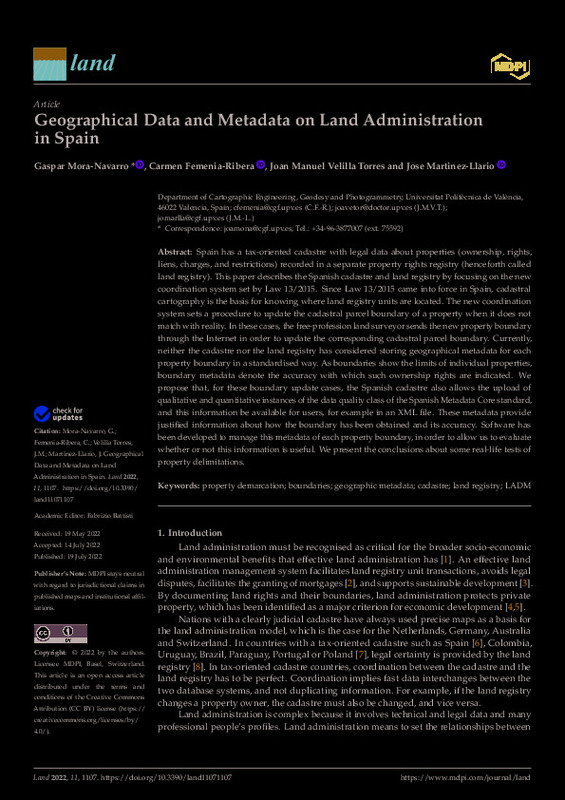JavaScript is disabled for your browser. Some features of this site may not work without it.
Buscar en RiuNet
Listar
Mi cuenta
Estadísticas
Ayuda RiuNet
Admin. UPV
Geographical Data and Metadata on Land Administration in Spain
Mostrar el registro completo del ítem
Mora Navarro, JG.; Femenia-Ribera, C.; Velilla Torres, JM.; Martínez Llario, JC. (2022). Geographical Data and Metadata on Land Administration in Spain. Land. 11(7):1-19. https://doi.org/10.3390/land11071107
Por favor, use este identificador para citar o enlazar este ítem: http://hdl.handle.net/10251/198604
Ficheros en el ítem
Metadatos del ítem
| Título: | Geographical Data and Metadata on Land Administration in Spain | |
| Autor: | Velilla Torres, Joan Manuel | |
| Entidad UPV: |
|
|
| Fecha difusión: |
|
|
| Resumen: |
[EN] Spain has a tax-oriented cadastre with legal data about properties (ownership, rights, liens, charges, and restrictions) recorded in a separate property rights registry (henceforth called land registry). This paper ...[+]
|
|
| Palabras clave: |
|
|
| Derechos de uso: | Reconocimiento (by) | |
| Fuente: |
|
|
| DOI: |
|
|
| Editorial: |
|
|
| Versión del editor: | https://doi.org/10.3390/land11071107 | |
| Coste APC: |
|
|
| Código del Proyecto: |
|
|
| Agradecimientos: |
This work was partially supported by the research projects: `The land registry as the basic tool for organising spatial information; INSPIRE Directive, spatial data and metadata', DER201123321/JURI; and `Current situation ...[+]
|
|
| Tipo: |
|









